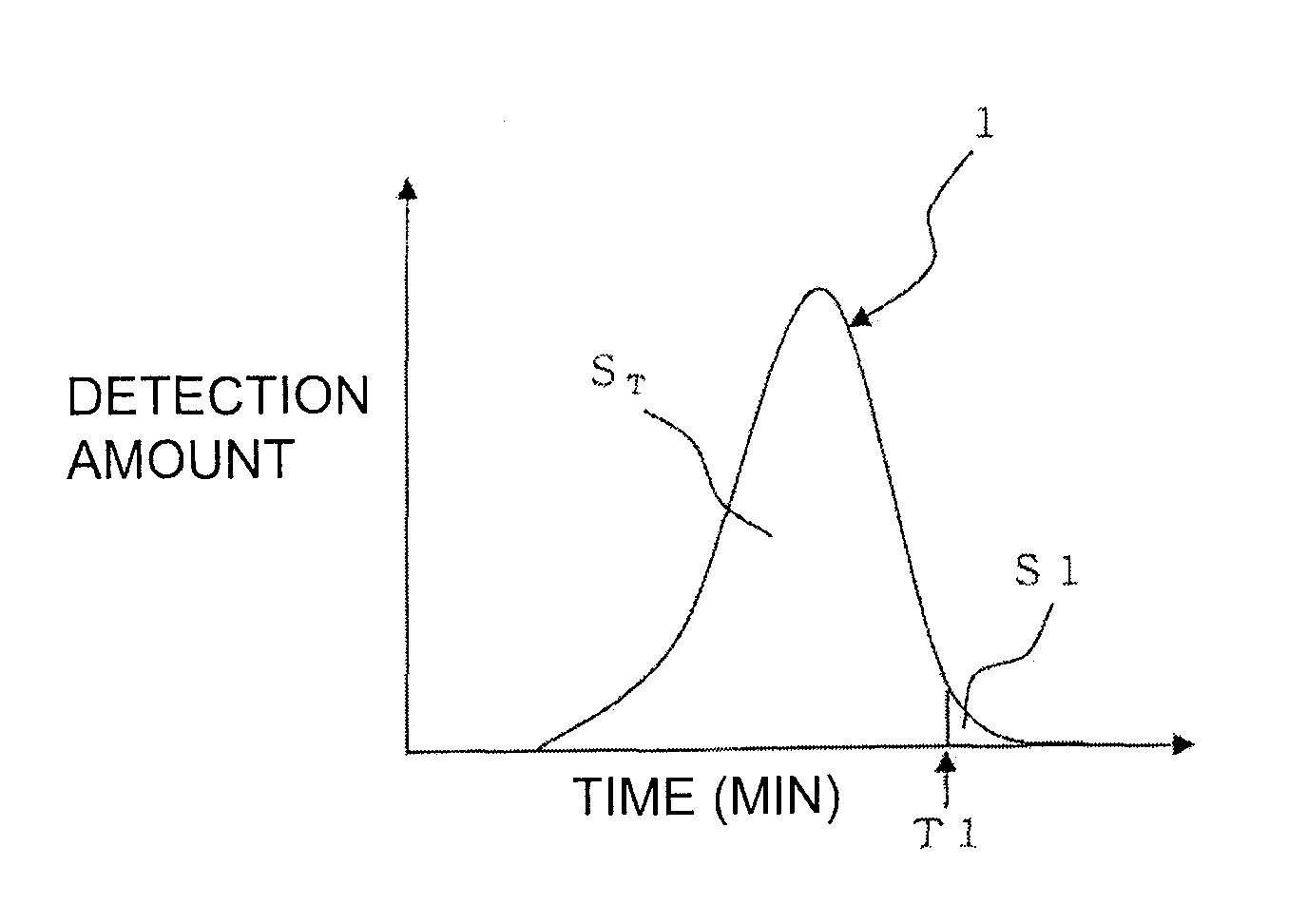Thermoplastic elastomer composition
a technology of elastomer composition and thermoplastic, which is applied in the direction of mixing, chemistry apparatus and processes, etc., can solve the problems of not necessarily showing and softener retention capability at the same time, and achieve excellent rubber elasticity, fluidity, adhesion and softener retention ability.
- Summary
- Abstract
- Description
- Claims
- Application Information
AI Technical Summary
Benefits of technology
Problems solved by technology
Method used
Image
Examples
synthesis example 1
[0155]Production of Oil-Extended Ethylene Copolymer (B);
[0156]A copolymerization reaction was continuously carried out at a pressure of 1 MPa using a stainless steel autoclave (internal volume: 10 L) equipped with a stirrer, of which the internal atmosphere was replaced with nitrogen. Hexane (polymerization solvent) was continuously supplied at 62 L / h through a supply port provided on the lower side of the autoclave, and ethylene, propylene, and 5-ethylidene-2-norbornene were continuously supplied at 0.80 Nm3 / h, 2.0 L / h, and 0.11 L / h, respectively. Ethylaluminium sesquichloride and vanadium trichloride (catalyst) were continuously supplied at 13.585 g / h and 0.384 g / h, and hydrogen (molecular-weight modifier) was also continuously supplied at 0.4 NL / h. The temperature inside the autoclave was maintained at 22° C. After completion of the reaction, a polymer obtained by the copolymerization reaction was moved to a storage vessel. 120 parts of Diana Process oil PW-90 (manufactured by Id...
synthesis examples 2 , 4
Synthesis Examples 2, 4, and 5
[0158]Oil-extended ethylene copolymers (b-2), (b-4), and (b-5) were produced in the same manner as in Synthesis Example 1, except for changing the amounts of ethylene, propylene, 5-ethylidene-2-norbornene, ethylaluminium sesquichloride, vanadium trichloride, and hydrogen and the polymerization temperature as shown in Table 1.
[0159]The oil-extended ethylene copolymers (b-1) to (b-5) were evaluated as described above. The evaluation results are shown in Table 1.
[0160]
TABLE 1SynthesisSynthesisSynthesisSynthesisSynthesisExample 1Example 2Example 3Example 4Example 5Ethylene6767676767Propylene26.526.528.526.526.55-Ethylidene-2-norbornene6.56.54.56.56.5First mineral oil-based12012010012020softenerOil-extended ethyleneb-1b-2b-3b-4b-5copolymerEvaluation ofLimiting6.75.84.75.72.4ethyleneviscositycopolymer[η]Mw / Mn2.42.43.73.82.3Area ratio0.51.13.22.519(%)
synthesis example 3
[0161]An oil-extended ethylene copolymer (b-3) was produced in the same manner as in Synthesis Example 1, except for continuously supplying ethylene, propylene, and 5-ethylidene-2-norbornene at 0.75 Nm3 / h, 1.4 L / h, and 0.10 L / h, continuously supplying vanadium trichloride at 1.216 g / h, continuously supplying hydrogen at 0.06 NL / h, maintaining the copolymerization temperature at 30° C., and adding 100 parts of the mineral oil-based softener.
[0162]The oil-extended ethylene copolymer (b-3) had a limiting viscosity [η] of 4.7, a ratio (Mw / Mn) of 3.7, and a ratio of an area corresponding to a polystyrene-reduced molecular weight of 100,000 or less of 3.2%.
PUM
| Property | Measurement | Unit |
|---|---|---|
| mass % | aaaaa | aaaaa |
| mass % | aaaaa | aaaaa |
| melting point | aaaaa | aaaaa |
Abstract
Description
Claims
Application Information
 Login to View More
Login to View More - R&D
- Intellectual Property
- Life Sciences
- Materials
- Tech Scout
- Unparalleled Data Quality
- Higher Quality Content
- 60% Fewer Hallucinations
Browse by: Latest US Patents, China's latest patents, Technical Efficacy Thesaurus, Application Domain, Technology Topic, Popular Technical Reports.
© 2025 PatSnap. All rights reserved.Legal|Privacy policy|Modern Slavery Act Transparency Statement|Sitemap|About US| Contact US: help@patsnap.com


